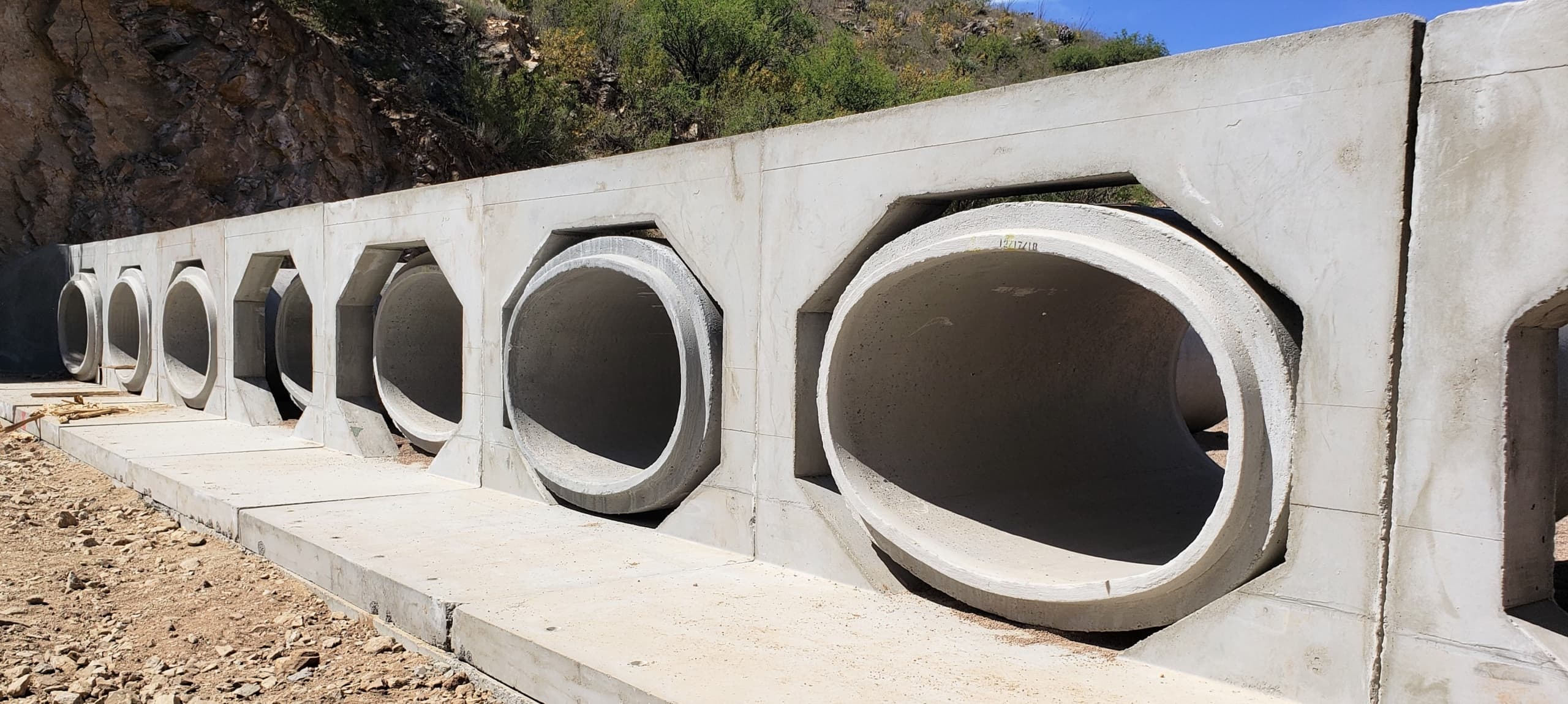When to Choose Standard vs Custom Precast
Why Choose Precast?
Precast concrete is widely used for its consistency, quality, and cost-efficiency. Compared to cast-in-place methods, precast requires fewer onsite resources, avoids weather-related delays, and is generally more affordable. While cast-in-place may offer onsite flexibility, it demands more labor and is vulnerable to environmental conditions.
Standard vs. Custom Precast Products
Standard Precast
-
Cost-effective
-
Readily available
-
Requires your design to match existing dimensions and configurations
Custom Precast
-
Fully tailored to project-specific needs
-
Allows unique sizing, openings, and configurations
-
Higher cost and longer lead times
Modified Standard (The Middle Ground)
-
Standard products with minor modifications
-
Reduces cost and lead time
-
Can be specified early in design or adapted in the field
Our Recommendation

Jensen Infrastructure has been designing and manufacturing precast solutions since 1968. With a team of in-house engineers and decades of project experience, we help you determine whether a standard, modified, or custom solution is right for your application.
We offer modular components—typically round, square, or rectangular—available in 1′ height increments and riser sections in 6″, 12″, 3″, or 24″ sizes. These allow for efficient design flexibility with reduced lead times.
Product Applications
Utility Boxes
-
Available in standard, modified, or custom forms
-
Approved products for most local agencies and utilities
-
Applications: vaults, pull boxes, handholes, and equipment pads (dry utilities), as well as manholes, catch basins, drainage inlets, pipe, and tanks (wet utilities)
Design Considerations
-
Sizes & load ratings
-
Pipe/conduit openings
-
Access & vents
-
Sumps, sealants, coatings, and liners
-
Concrete & reinforcement specs
Specialty Products
Grease Interceptors
Precast concrete battery grease interceptors feature standard steel tooling for commercial use with custom volumes and piping connections. Meets ASTM C1613 standard specification.
Drainage Junction Structures
Large rectangular grate inlets and junction structures feature standard steel tooling for drainage use with custom openings using standard steel tooling. Meets ASTM C890 standard specification.
Large, segmented round structures feature standard steel tooling for drainage junction structure use with custom depths and custom openings. Meets ASTM C890 standard specification.
Battery Tanks
Precast concrete battery tanks feature standard steel tooling for drainage detention, retention, or infiltration use with custom volumes and custom openings. Meets ASTM C890 standard specification.
Wet Wells
Large, segmented round structures feature standard steel tooling for wet well use with custom depths and custom openings. Meets ASTM C890 standard specification.
Box Culvert
Type 1 and Type 2 segmented box culvert features standard steel tooling for drainage detention, retention, or infiltration use with custom end walls, custom volumes, and custom openings Meets ASTM C890 standard specification.
Monolithic box culvert features standard steel tooling for drainage detention, retention, or infiltration use with custom infill slabs, custom end walls, custom volumes, and custom openings. Meets ASTM C890 standard specification.
Why Work with Jensen?
Why Contractors Choose Our Precast Solutions
-
Pre-designed structures available for agency submittals
-
Minimized open trench time
-
Familiar installation methods and streamlined setup
Why Engineers Sometimes Hesitate
-
Unaware of our custom design capabilities using standard tooling
-
Hesitation to revise already-specified dimensions in plans
Standard, Modified Standard, or Custom
Whatever your project needs, Jensen has the experience and expertise to fulfill your requirements. We will recommend the best product type for your project to save you time and costs.
Whether your project requires standard, modified standard, or fully custom precast products, Jensen has the experience and engineering insight to guide your decision.
Contact us at 775-352-2700 to speak with a precast expert.
